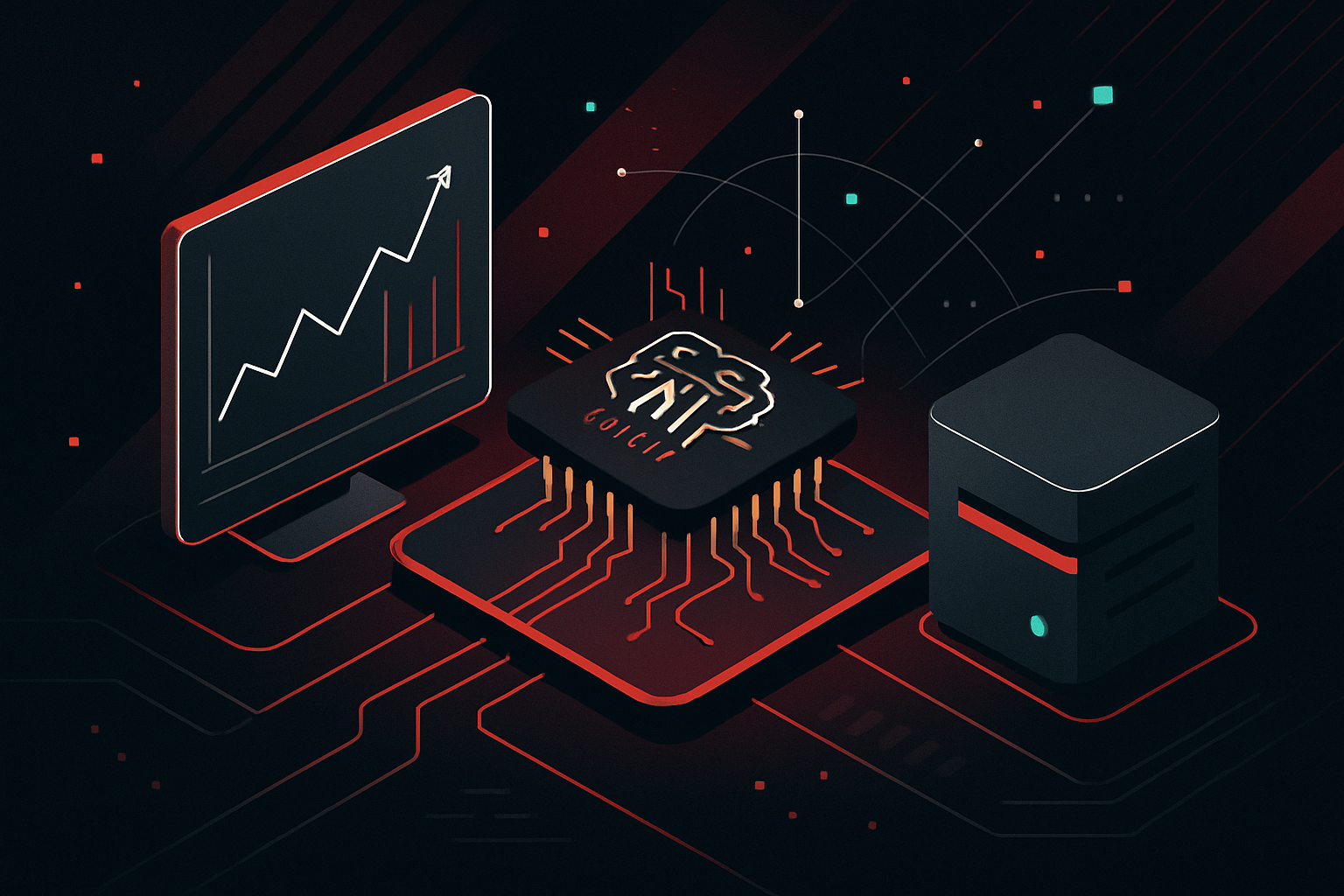Top Python Libraries for Machine Learning in 2024
Top Python Libraries for Machine Learning in 2024
Scikit-Learn
Scikit-learn remains a fundamental library for machine learning in 2024, providing a robust suite of tools for data analysis and modeling. It is built on NumPy, SciPy, and matplotlib, making it a comprehensive option for tasks such as classification, regression, clustering, and dimensionality reduction.
Key Features:
– Simple and efficient tools for data mining and data analysis.
– Accessible to everyone and reusable in various contexts.
– Built on NumPy, SciPy, and matplotlib.
Example Usage:
from sklearn import datasets
from sklearn.model_selection import train_test_split
from sklearn.ensemble import RandomForestClassifier
from sklearn.metrics import accuracy_score
# Load dataset
iris = datasets.load_iris()
X, y = iris.data, iris.target
# Split dataset
X_train, X_test, y_train, y_test = train_test_split(X, y, test_size=0.3, random_state=42)
# Train model
clf = RandomForestClassifier(n_estimators=100)
clf.fit(X_train, y_train)
# Predict and evaluate
predictions = clf.predict(X_test)
print(f"Accuracy: {accuracy_score(y_test, predictions)}")
TensorFlow
TensorFlow, developed by Google, continues to be a leading library for deep learning applications. Its versatility in handling large-scale machine learning operations and its support for deployment across various platforms make it indispensable.
Key Features:
– TensorFlow 2.x is more user-friendly with eager execution.
– Keras integration for high-level neural networks API.
– TensorFlow Lite for mobile and IoT devices.
Example Usage:
import tensorflow as tf
# Define a simple Sequential model
model = tf.keras.models.Sequential([
tf.keras.layers.Dense(128, activation='relu', input_shape=(784,)),
tf.keras.layers.Dense(10, activation='softmax')
])
# Compile the model
model.compile(optimizer='adam',
loss='sparse_categorical_crossentropy',
metrics=['accuracy'])
# Train the model
model.fit(X_train, y_train, epochs=5)
# Evaluate the model
loss, accuracy = model.evaluate(X_test, y_test)
print(f'Accuracy: {accuracy}')
PyTorch
PyTorch is a favored choice for research and development, known for its dynamic computation graph and ease of use. Its strong community support and integration with other Python libraries make it a popular choice for deep learning tasks.
Key Features:
– Dynamic computation graph for flexible model building.
– Strong GPU acceleration.
– TorchScript for deploying models in production.
Example Usage:
import torch
import torch.nn as nn
import torch.optim as optim
# Define a simple feedforward network
class Net(nn.Module):
def __init__(self):
super(Net, self).__init__()
self.fc1 = nn.Linear(784, 128)
self.fc2 = nn.Linear(128, 10)
def forward(self, x):
x = torch.relu(self.fc1(x))
x = self.fc2(x)
return x
model = Net()
# Define loss and optimizer
criterion = nn.CrossEntropyLoss()
optimizer = optim.Adam(model.parameters(), lr=0.001)
# Train the model
for epoch in range(5):
optimizer.zero_grad()
output = model(X_train)
loss = criterion(output, y_train)
loss.backward()
optimizer.step()
# Evaluate the model
correct = 0
total = 0
with torch.no_grad():
for data in X_test:
output = model(data)
_, predicted = torch.max(output.data, 1)
total += y_test.size(0)
correct += (predicted == y_test).sum().item()
print(f'Accuracy: {100 * correct / total}')
Keras
Keras, now integrated within TensorFlow, is still a user-friendly API for building and training deep learning models. Its simplicity and ease of use make it an excellent choice for beginners and rapid prototyping.
Key Features:
– Simple and consistent interface optimized for common use cases.
– Highly modular and extensible.
– Integration with TensorFlow as a high-level API.
XGBoost
XGBoost is a popular library for implementing gradient boosting algorithms. It is widely used in competitive machine learning due to its high performance and efficiency.
Key Features:
– Speed and performance through parallel and distributed computing.
– Accurate and efficient for many modeling tasks.
– Robustness to overfitting with regularization.
Example Usage:
import xgboost as xgb
# Convert dataset to DMatrix
dtrain = xgb.DMatrix(X_train, label=y_train)
dtest = xgb.DMatrix(X_test, label=y_test)
# Specify parameters
params = {
'max_depth': 3,
'eta': 0.1,
'objective': 'multi:softmax',
'num_class': 3
}
# Train model
bst = xgb.train(params, dtrain, num_boost_round=10)
# Predict and evaluate
predictions = bst.predict(dtest)
accuracy = accuracy_score(y_test, predictions)
print(f"Accuracy: {accuracy}")
LightGBM
LightGBM, developed by Microsoft, is another gradient boosting framework that is particularly efficient for large datasets and offers excellent performance.
Key Features:
– Faster training speed and higher efficiency.
– Lower memory usage.
– Capable of handling large-scale data.
Example Usage:
import lightgbm as lgb
# Create dataset for LightGBM
train_data = lgb.Dataset(X_train, label=y_train)
test_data = lgb.Dataset(X_test, label=y_test)
# Specify parameters
params = {
'objective': 'multiclass',
'num_class': 3,
'metric': 'multi_logloss'
}
# Train model
gbm = lgb.train(params, train_data, num_boost_round=20, valid_sets=[test_data], early_stopping_rounds=5)
# Predict and evaluate
predictions = gbm.predict(X_test)
accuracy = accuracy_score(y_test, predictions.argmax(axis=1))
print(f"Accuracy: {accuracy}")
Comparison Table
| Library | Primary Use Case | Strengths | Weaknesses |
|---|---|---|---|
| Scikit-learn | General ML tasks | Easy to use, versatile | Limited deep learning |
| TensorFlow | Deep Learning | Scalability, deployment options | Steeper learning curve |
| PyTorch | Research/Development | Dynamic graphs, community support | Less suited for production |
| Keras | Deep Learning | User-friendly, rapid prototyping | Limited customizability |
| XGBoost | Gradient Boosting | High performance, competitive ML | Can overfit if not tuned |
| LightGBM | Gradient Boosting | Fast, efficient on large data | Complex API for beginners |
Final Thoughts
The landscape of machine learning libraries in Python is rich and continually evolving. Choosing the right tool for your project depends on your specific needs, such as the scale of your data, the complexity of your model, and your deployment requirements. By understanding the strengths and use cases of each library, you can make informed decisions that best suit your project objectives.





0 thoughts on “Top Python Libraries for Machine Learning in 2024”